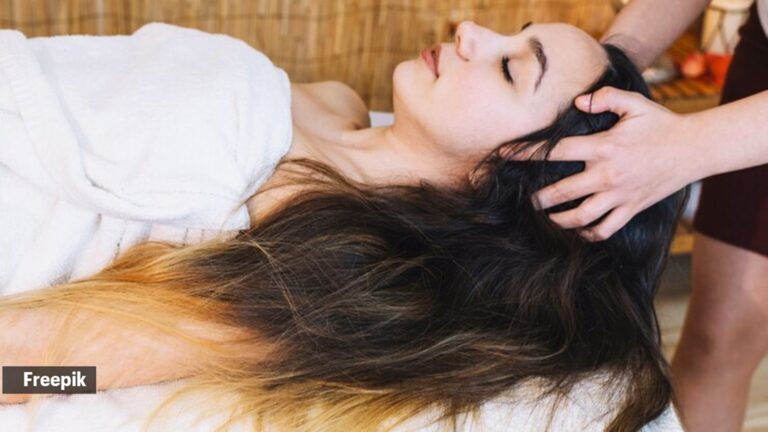Korean skincare trends have been all the rage, from glass skin to cherry lip makeup. Now, a new trend seems to be emerging: Korean head spas, which are touted as a better alternative to regular scalp care. With the promise of deep cleansing your hair, the treatments leave you feeling totally rejuvenated. But do they really work? We find out.
According to Lalita Aarya, vice president of Dermapuritis Beauty Clinic, Korean head spas place a strong emphasis on scalp health. “Such treatments include a series of deep cleansing, peeling, massage and moisturising, aimed at removing impurity build-up, increasing blood flow and creating the right scalp environment,” Aarya said.
Dr Jatin Mittal, skin specialist and aesthetician, co-founder of Avivrit Aesthetics, New Delhi, said the Korean head spa is a scalp-specific treatment rooted in Korean beauty practices, with a focus on improving scalp health, hair quality and overall relaxation. “It’s similar to other spa treatments, but it specifically targets the scalp,” Dr Mittal said.
They emphasise that a healthy scalp grows strong hair. “Furthermore, Korean head spas tend to take a more holistic approach, focusing on stress reduction and overall wellness in addition to hair and scalp health,” said Dr Vidushi Jain, dermatologist and medical director, Dermalins, Noida and Ghaziabad.
Dr Mittal further said that Korean head spas often use traditional Korean herbal ingredients such as ginseng, green tea and mugwort, which are less common in Western head spas. “These natural remedies are thought to nourish the scalp and hair from the inside out,” Dr Mittal said.
Scalp-scaling techniques may involve removing dead skin cells, dandruff, and oil. “That’s why Korean head spas are so invigorating – your scalp feels refreshed,” says Aria.
structure
Dr Mittal explained the procedure in detail.
Scalp Analysis: The session typically starts with a detailed scalp analysis to determine the condition of your scalp – whether it’s dry, oily, sensitive, or has any issues like dandruff or hair loss.
Cleanse: Use a deep cleansing shampoo to remove dirt, oil, and product buildup. This step often involves gently massaging the scalp to stimulate blood circulation.
Massage: A scalp massage is an important component, using techniques such as acupressure to relieve tension, improve blood flow and promote relaxation. Some treatments also include a neck and shoulder massage.
Treatments: Depending on your scalp’s needs, you can apply special treatments like moisturizing masks, serums, and essential oils. These products often contain nourishing ingredients like ginseng, green tea, and other herbal extracts.
Steam: A steam treatment may also be included to help the product penetrate deeper into the scalp and hair.
Rinse and Finish: The treatment is finished by rinsing the product and applying a leave-in conditioner or serum, if desired.
Styling: If you prefer, you can finish your session with a blow dry and styling.
Although these treatments can be beneficial for many people, Arya stressed that people should not rush to use them.
The scalp is very sensitive and can be damaged by massage, rough handling or use of chemicals. “Some people suffer from skin conditions on their scalp like eczema, psoriasis, folliculitis etc. Therefore, it is important to seek the opinion of a dermatologist before undergoing a head spa treatment. Moreover, customers with sensitive skin or allergies should be extra careful and inform the therapist,” said Aalia, advising them to seek treatment from a professional to prevent aggravation of skin conditions.
Always be cautious when undergoing any new treatment (Source: Getty Images/Thinkstock)
Aria stressed that these treatments “should not necessarily replace good home care,” including “regular scalp cleansing, conditioning and even finger massage,” she said.
If you continue to have scalp problems during or after a head spa treatment, it’s best to consult a dermatologist, recommends Arya.

